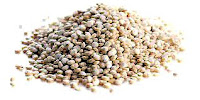I have been watching documentaries about food. These movies are opening my eyes. I found most of them on Netflix and am watching them online.
Watched them all once:
The Beautiful Truth
Food, Inc.
Fat, Sick & Nearly Dead
(This movie introduced me to juicing for real.)
Food Matters
Food Beware: The French Organic Revolution
The Future of Food
Life Running Out of Control
Ingredients
Fed Up!
King Corn
Big River
Change Your Food, Change Your Life
Fat: What No One is Telling You
The Meaning of Food (3 episodes PBS)
To Market To Market To Buy a Fat Pig (3 part PBS ) Check your volume. There is the sound of a pig on opening.
Sunday, July 31, 2011
Wednesday, July 27, 2011
Fat, Sick and Nearly Dead
I just watched Fat, Sick & Nearly Dead, a movie by Joe Cross.
Synopsis (see Rotten Tomatoes): Overweight Australian filmmaker Joe Cross attempts to wrestle back control of his failing health during a cross-country trek in which he engages everyday Americans in discussions about food and obesity in this lighthearted documentary addressing a deadly serious subject. Clocking in at 310 pounds and pumped full of steroids to battle a debilitating autoimmune disorder, Cross realized that he would soon be dead if he didn't make some major lifestyle changes...
Although it felt like a juicer promotion, it worked as a teaching tool...it did for me anyway.
There is a website, too.
JUICER RECIPES
MORE RECIPES
Tuesday, July 26, 2011
Cool as a Cucumber
Cucumbers have been around for a long long time; they were used for food in ancient Egypt. They are an alkaline, non-starchy (and cooling) vegetable. The peelings are edible. Cucumbers are wonderful as a digestive aid and have a purifying effect on the bowels. Serve them thinly sliced, raw, in lemon juice, sour cream or yogurt (great summer dish). FYI: Great for your skin; cucumbers have a cooling effect on the blood.
LINKS:
Nutritional information
All you ever wanted to know about cucumbers and then some.
Rachel Ray video about making cucumber cups.
Cucumber cups
Monday, July 25, 2011
Quinoa "The Mother Grain"
Quinoa was a staple of the ancient Incas who called it "the mother grain". Actually, Quinoa (keen-wa) is not a grain or a member of the grass family. Though it looks, tastes and cooks like a grain, it is the dried fruit from an herb native to Bolivia and Peru. It is a pseudo-cereal rather than a true cereal, or grain. Quinoa is closely related to species such as spinach, tumbleweeds and beets; In the States, it is grown in the Rocky Mountains of Colorado (Climate and terrain similar to the Andes).
Quinoa is rich in all eight essential amino acids (unlike traditional grains) that compose a complete protein. The only other foods that contain these essential amino acid are red meat, eggs and dairy products. Consider Quinoa instead. It is much lower in calories and fat and is abundant in fiber: 1/2 cup= 129 cal/2 grams fat/4.6 grams dietary fiber. This "mother grain" is an excellent source of potassium and iron, and a good source of various B vitamins as well as zinc. It cooks in about 10-15 minutes and has a mild flavor.
Grow your own quinoa. The website I linked to considers quinoa a grain.
Quinoa recipes
All about Quinoa
Sunday, July 24, 2011
Olive Oil
Archeologists believe olive oil has been around for a long time ( more than 10,000 years) and has been used for centuries for many things: lighting lamps, cosmetics, anointing of the dead, medicine and food. Olive oil eases the arteries. Monounsaturated fat (the kind found in olive oil) gives a huge benefit in that it cuts down on bad cholesterol without harming good cholesterol. "Experts" say that it makes the blood less likely to clot (decreases blood's stickiness). This lowers blood pressure and risk for stroke.
Types (the final product): Each one will reflect the different types of olives, the landscape, climate and production processes used.
EVOO (Extra virgin olive oil) has the lowest acidity of all grades and is not chemically extracted. The ripe olives are picked and sent to the mill immediately. The olives are crushed into a mash by huge wheels. The mash is then pressed. The filled bottles are labeled "first cold press" because no heat is used. Eat sensibly and add olive oil whenever possible. Mild olive oil goes well with fish dishes. A fruity, spicy one will compliment grilled steak. All olive oil has 120 CALORIES PER TABLESPOON (regardless of grade).
Olive Oil Recipes
10 Healthy Baking Recipes
Heart Healthy Olive Oil Recipes
Types (the final product): Each one will reflect the different types of olives, the landscape, climate and production processes used.
EVOO (Extra virgin olive oil) has the lowest acidity of all grades and is not chemically extracted. The ripe olives are picked and sent to the mill immediately. The olives are crushed into a mash by huge wheels. The mash is then pressed. The filled bottles are labeled "first cold press" because no heat is used. Eat sensibly and add olive oil whenever possible. Mild olive oil goes well with fish dishes. A fruity, spicy one will compliment grilled steak. All olive oil has 120 CALORIES PER TABLESPOON (regardless of grade).
Olive Oil Recipes
10 Healthy Baking Recipes
Heart Healthy Olive Oil Recipes
Subscribe to:
Comments (Atom)




